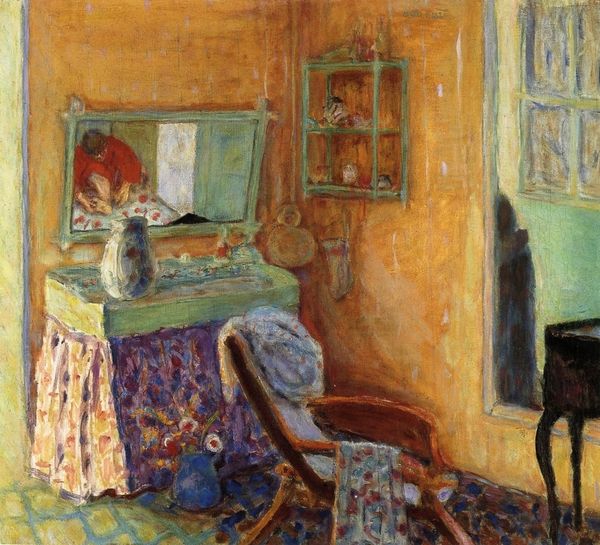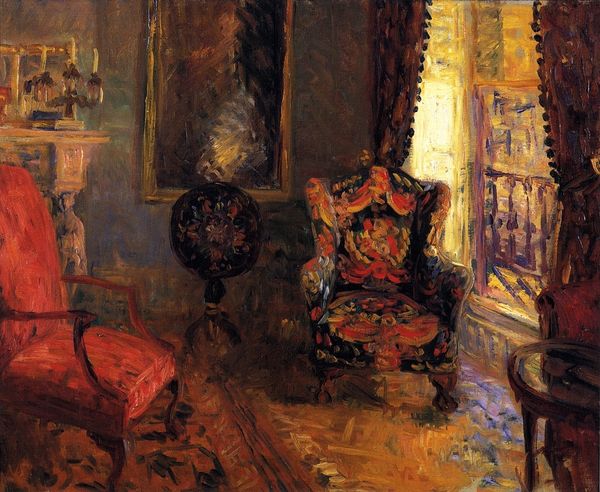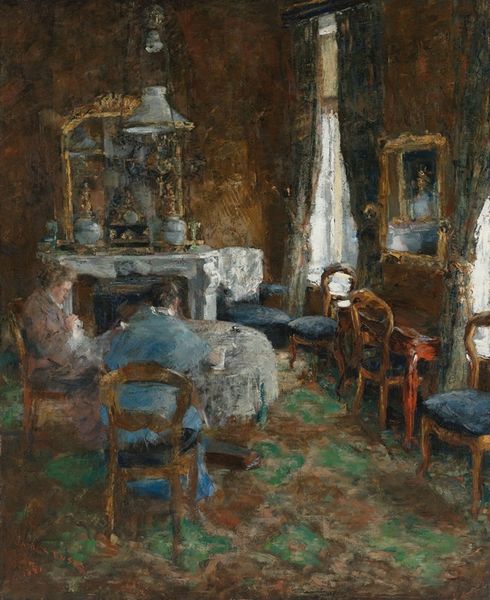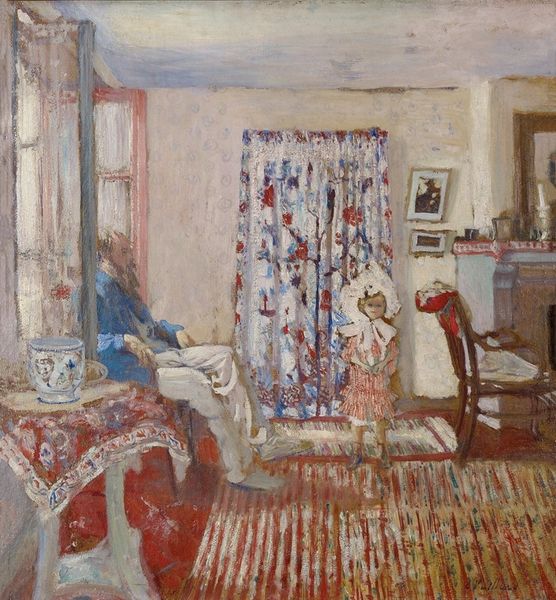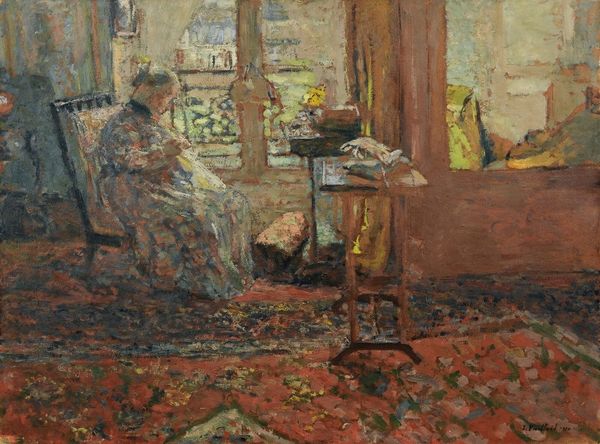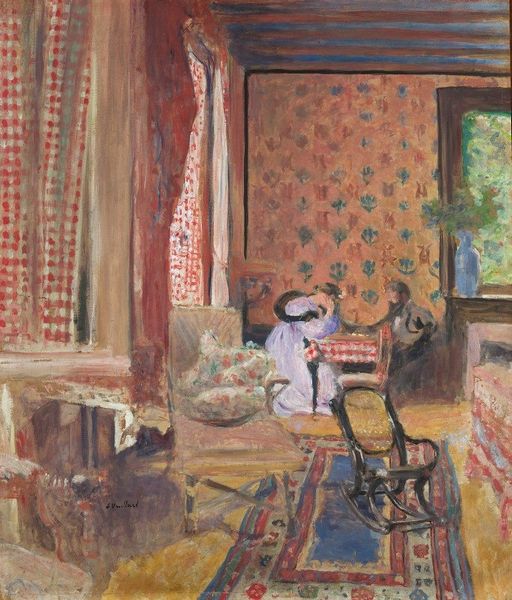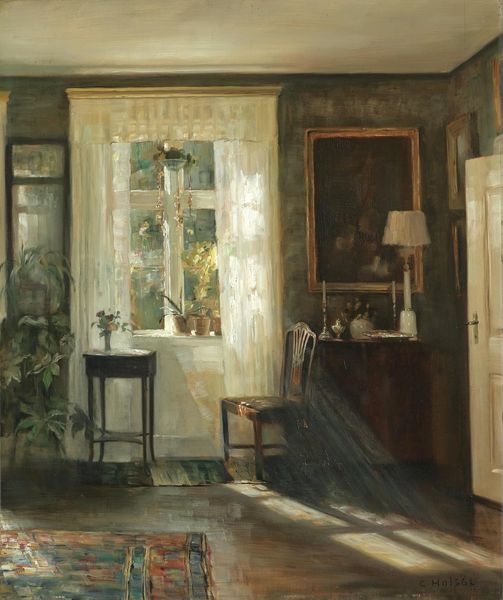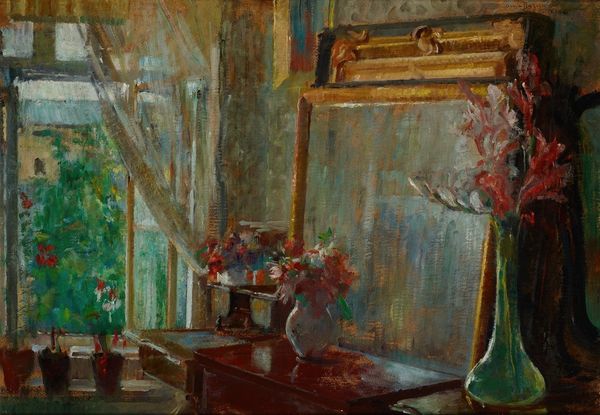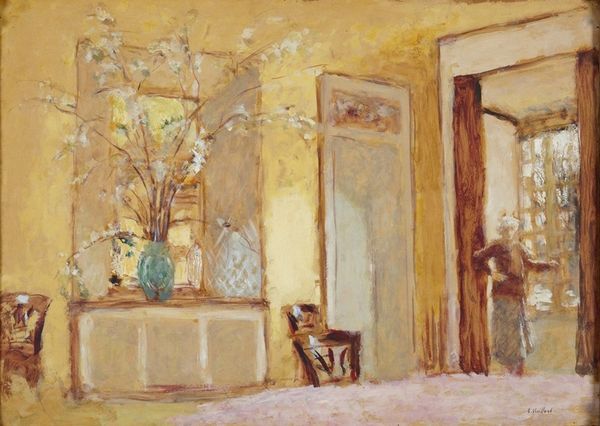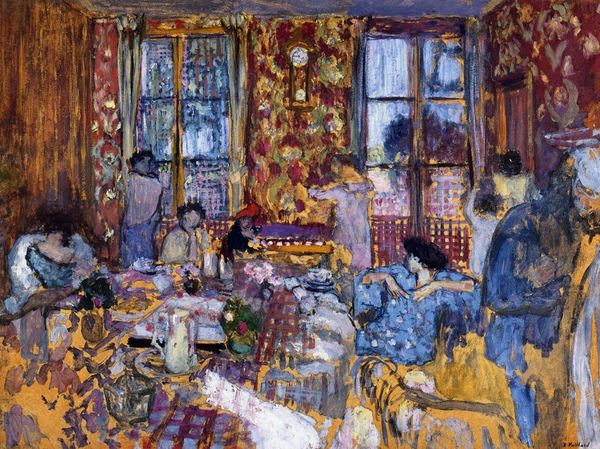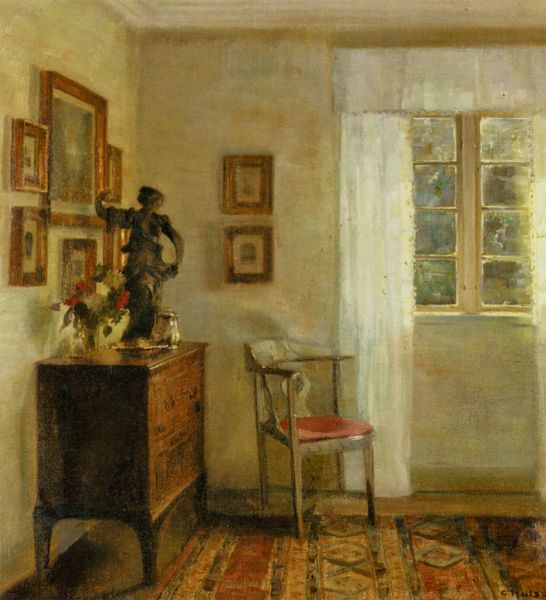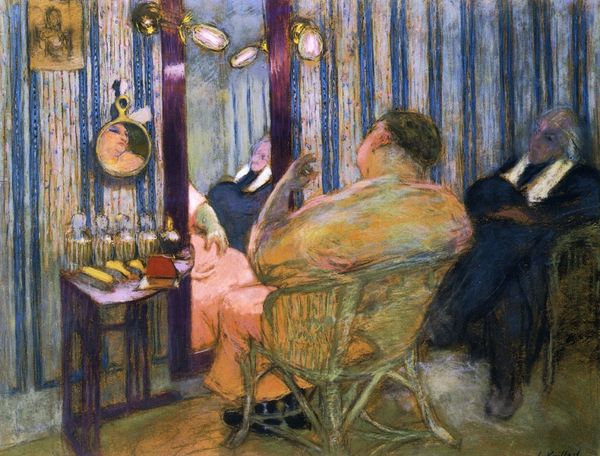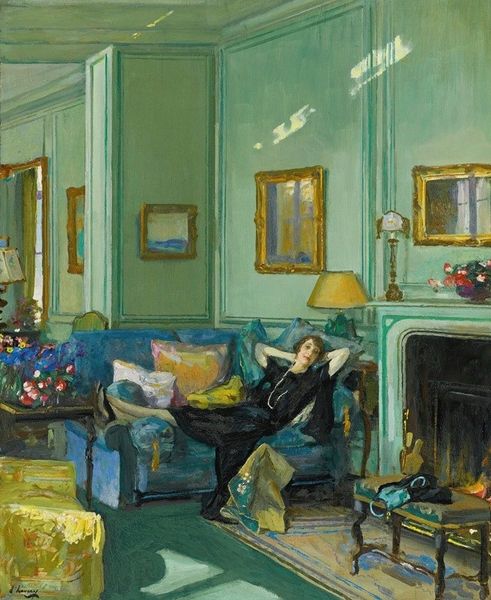
#
portrait
#
abstract expressionism
#
abstract painting
#
impressionist painting style
#
impressionist landscape
#
possibly oil pastel
#
oil painting
#
famous-people
#
acrylic on canvas
#
painterly
#
painting painterly
#
female-portraits
#
expressionist
Dimensions: 112 x 81 cm
Copyright: Public domain
Curator: This is Édouard Vuillard’s “Princess Bibesco (Marthe Lahovary),” completed in 1920. Editor: It has a dreamlike quality. Everything sort of bleeds into everything else, a blur of impressionistic color that threatens to dissolve the princess altogether. Curator: Vuillard was a master of interior scenes, domestic spaces imbued with psychological weight. The Princess, a Romanian writer and socialite, is enveloped in her surroundings. Look at the layers of patterns, the way the wallpaper seems to mimic the tapestry, and the play of light coming in through the windows. What do you make of the abundance of patterns? Editor: Formally, they operate as planes within the overall pictorial space. It creates this flattened effect, which, ironically, gives depth. It pushes and pulls our vision, creating dynamism. But there's also a sense of being overwhelmed, of being swallowed by the details. The painting’s structure seems more important than her figure. Curator: I agree. It's as if the domestic space, traditionally associated with the feminine, is both a comfort and a constraint. Note, for instance, that her pose, reclining on the chaise, suggests leisure, yet there's a somberness in her expression. This evokes the cultural memory of societal expectation placed on the women, who historically remained in the interiors, while the men populated public spaces. Editor: The lighting as well! The artificial glow of the lamp clashes with the cool light coming through the window. Curator: Yes, it feels deliberate. This highlights a tension, an unspoken conflict. Princess Bibesco, renowned for her intellect and ambition, appears confined, almost lost, within her beautiful, gilded cage. Editor: What’s striking is Vuillard's orchestration of these formal elements and the visual story they tell. We see not only a portrait but an essay on a specific time in society as a whole. Curator: Absolutely, and the portrait's lingering effect reminds us of the enduring dialogue between women, their spaces, and their multifaceted selves. Editor: Indeed. This work offers an open field of contemplation. It stays with you long after you move on.
Comments
No comments
Be the first to comment and join the conversation on the ultimate creative platform.
